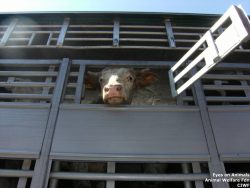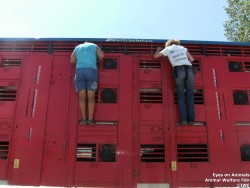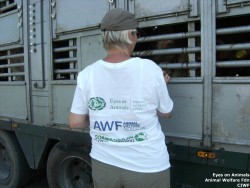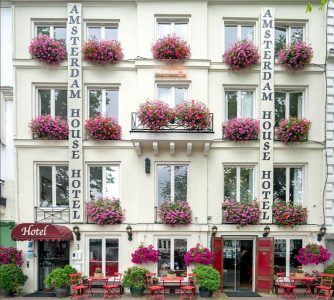Turkish/Bulgarian Border Inspection – Day 3
During the week from July 6th to 12th, Eyes on Animals, together with two other animal welfare partners (CIWF and AWF) carried out an intensive investigation of livestock trucks transporting cattle and sheep from all over Europe across the border into Turkey. This inspection and its´ findings received extensive media attention.

 Day 3: This morning, an Eyes on Animals team checked the situation immediately after the border on the Turkish side, in Kapikule. Again, animals awaited, sometimes days, along the roadside or in parking lots of petrol stations, until all the paperwork was in order before they could continue their journey. In an area where the trucks of Keus & Mollink always go, we found two trucks, including the truck with young bulls for slaughter, which we had seen the previous evening. A second truck from this company was a brand new truck with all necessary facilities for these long journeys. These animals had a thick layer of straw on the floor, sufficient space and the drivers were busy giving the animals hay and water.
Day 3: This morning, an Eyes on Animals team checked the situation immediately after the border on the Turkish side, in Kapikule. Again, animals awaited, sometimes days, along the roadside or in parking lots of petrol stations, until all the paperwork was in order before they could continue their journey. In an area where the trucks of Keus & Mollink always go, we found two trucks, including the truck with young bulls for slaughter, which we had seen the previous evening. A second truck from this company was a brand new truck with all necessary facilities for these long journeys. These animals had a thick layer of straw on the floor, sufficient space and the drivers were busy giving the animals hay and water.
Unfortunately, the other truck was in an entirely different state. The bulls were on thinly covered, wet ground and too close together for the hot temperatures. Some bulls were loaded with back and head against the roof. There was a strong smell of ammonia. The drivers did have enough hay with them to feed their animals.

 We also inspected several sheep trucks with waiting along the road for permission to travel. One truck stood out positively. The drivers did what they could in temperatures of around 30 degrees, and kept giving their sheep more water.
We also inspected several sheep trucks with waiting along the road for permission to travel. One truck stood out positively. The drivers did what they could in temperatures of around 30 degrees, and kept giving their sheep more water.
In the afternoon we revisited the location where sheep were unloaded and reloaded. This time we witnessed the attempt to load a very weak lamb, which we once more attempted to prevent. We tried to buy the lamb, to euthanize it. Initially this approach seemed to work after consultation with an employee of the Ministry of Agriculture. Unfortunately, the staff of this exchange point hadn’t received this communication. The lamb was taken from us and put in a stall.
In the meantime, the very dirty Keus & Mollink truck appeared and remained for a few hours. Its bulls were very thirsty, the temperature around 40 degrees and their truck even dirtier. A bull, desperate from hunger and thirst, was beginning to eat his own soiled bedding straw. After a few hours, this truck drove away again, without providing any care whatsoever.
The truck whose drivers had properly cared for the sheep arrived. The sheep were unloaded and allowed to rest, eat and drink. In the afternoon, the Turkish press was also present and filmed the situation at this stopping point involving our crew. The next day, several Turkish newspapers had articles concerning our week’s work at the border.

